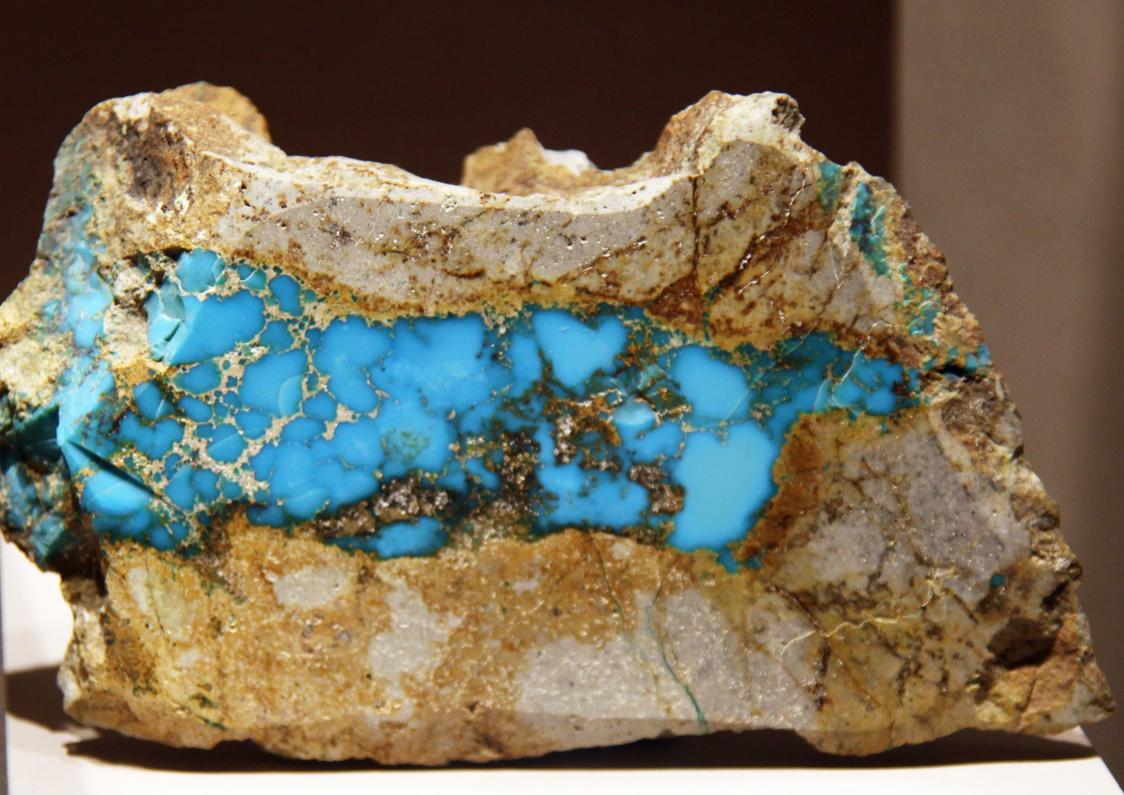Using traditional blasting techniques to extract turquoise from the mines in Neyshabour (in Khorasan Razavi Province) crush the turquoise stones, reducing the mines’ output significantly.
Even though the mining company in charge of extracting turquoise from the northeastern city has communicated with universities across the country, as well as with mining organizations and the ministry of industry, mine, and trade to come up with modern techniques to help boost extraction quality and quantity, none have responded yet, Eghtesadnews reported.
Around 50 metric tons of turquoise ore are extracted from Neyshabour mines annually but the ores cannot be exported as per current export regulations. Hence, the entire output of turquoise ore is processed domestically and turned into pendants or gems for different types of jewelry such as rings, necklaces, and bracelets. The turquoise ore is sold at 0.5 million to 500 million rials ($14.5-$14,500) per kilogram depending on purity and grade and the finished gemstones are priced at 0.6 m to 250 m rials ($1.7 to $7,238) a piece.
Turquoise is a rare gemstone worldwide, found only in limited mines in Iran, the United States, Egypt, and China. The gemstone has long been prized for its intense color, which varies from sky-blue to green, depending on the quantities of iron and copper within. Turquoise is commonly found in microcrystalline, massive form, usually as encrustations, in veins, or as nodules. It is opaque to semi-translucent, light and very fragile. That is why the precious stone is easily crushed into pieces when blasting operation in a mine is not carried out scientifically.
Neyshabour turquoise mines are believed to be among the world’s oldest known mines and also the most desirable. The sites in Mexico and the USA, however, produce a greener, more porous material that tends to fade more quickly.
The report suggests that large quantities of American turquoise are imported to Iran every year, most of which are later sold under the brand of Neyshabour turquoise.
Iranian turquoise is exported to Arab countries, Turkey, Thailand, Malaysia, Indonesia, India, the European countries, and even the US after being cut and processed which creates value added for the country.
Cutting techniques in Iran, however, have remained traditional with little or no use of modern machinery, according to experts.
Despite the problems, the turquoise sector in Iran is profitable and there is a fair global demand for the Iranian turquoise. The main challenge for the Neyshabour turquoise mine, with a proven reserve of about 8,671 metric tons, is to reduce extraction loss arising from out-dated blasting techniques.
According to the market experts, the price of average quality turquoise gem increases a hundred times once it’s cut, whereas the increase in value is seven times more in case of high-quality gems.
While this great value added potential is recognized by the turquoise mining companies, they are unable to improve the quality and quantity of their extraction due to lack of modernization.
Another advantage listed for the industry is the considerably low energy and water consumption, according to gemstone expert Mohammad Javad Pishbin.
Experts believe with a marketing strategy, the selling price of Iranian turquoise could increase dramatically, making the precious stone tradable in the global markets.


